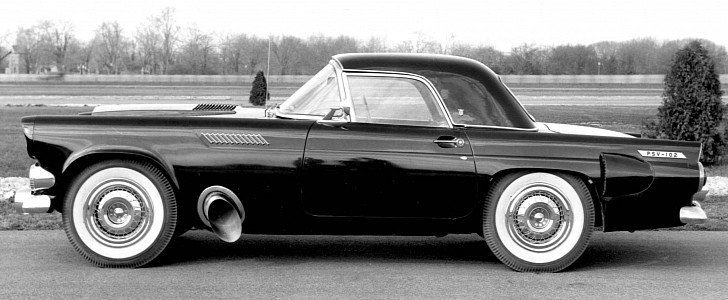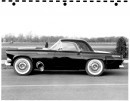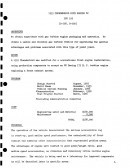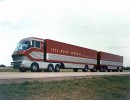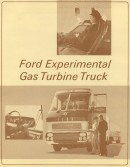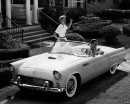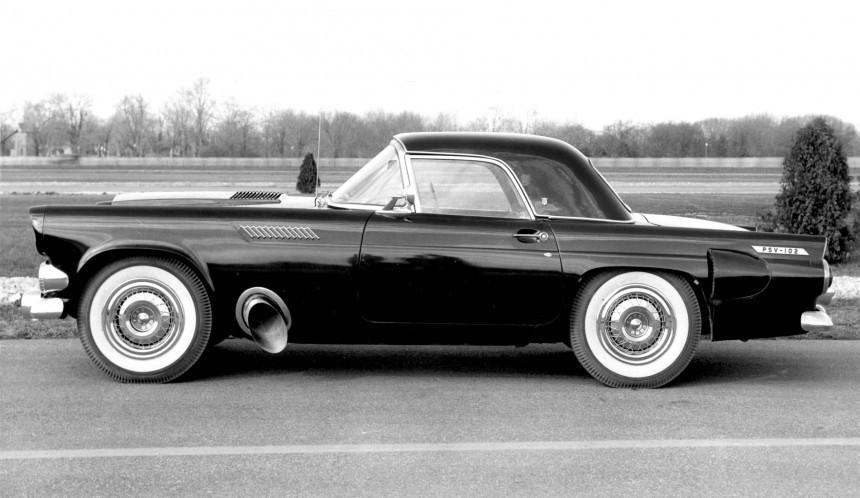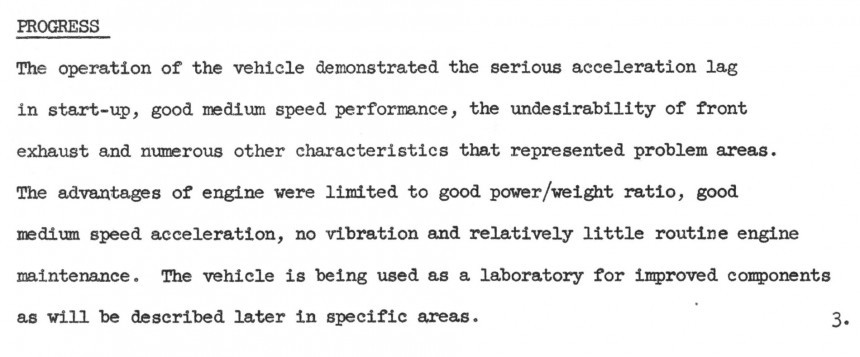It's been more than 110 years since the first mass-produced automobile hit public roads, and cars are still largely powered by piston engines. But carmakers have experimented with all sorts of solutions in the past, including gas turbine powerplants of the aircraft variety.
The Chrysler Turbine Car is perhaps the most iconic example. The project began in the mid-1950s with a turbine-powered Belvedere and morphed into a Chrysler of unique design by 1963. Mopar built 55 cars, 50 of which were lent to the general public as part of a user program.
The project was eventually canceled and all but nine cars were destroyed. But Chrysler wasn't the only American carmaker that ventured into gas turbine territory.
General Motors also toyed with the idea through the Firebird, a series of four prototypes/concepts it introduced between 1953 and 1959. But what about Ford, the company that introduced the first mass-produced automobile in the early 1900s?
Well, FoMoCo's efforts in this department aren't as iconic as the Chrysler Turbine Car or the GM Firebird, but it also meddled with gas turbine engines.
Its most known project is Big Red, a turbine-powered experimental truck showcased in 1964. But it turns out that Ford actually put together its first turbine car almost a decade before that.
It was essentially a Ford Thunderbird with an engine swap and used a Boeing 8C to move about. Developed between August 1955 and March 1956, shortly after the iconic Thunderbird made its debut, the project remained a secret until 2022, when it was unveiled to the world by Ford archivist Ted Ryan.
According to a report sheet that was published alongside an old photo of the car, Ford's objective was to "obtain experience with gas turbine engine packaging and operation," as well as to obtain a "usable and reliable" turbine vehicle for "appraising the special advantages and problems" associated with this type of powerplant.
The prototype itself wasn't radically different than a regular-production Thunderbird.
While GM and Chrysler created unique vehicles for their gas turbine experiments, Ford simply stuffed a Boeing engine in the T-Bird's bay. The sheet mentions that the "conventional front-engine installation" was made using "production components," so there wasn't any wild engineering.
Ford opted for a front exhaust system, so the Thunderbird had massive pipes running through the lower front fenders. The picture also shows an additional, sizable vent on the rear fender, hinting at some sort of cooling system mounted in the trunk.
The Boeing 8C turbine was rated at 175 horsepower, which wasn't particularly powerful at the time. It actually produced less oomph than the Thunderbird's 292-cubic-inch (4.8-liter) V8 mill, which delivered up to 198 horsepower in 1955.
Sadly, there's no additional info about the turbine-powered T-Bird in terms of engineering, but the sheet does include the company's conclusions after the experiment.
Ford discovered numerous advantages, including a good power-to-weight ratio, good medium-speed acceleration, and a lack of vibration. The turbine engine also needed "relatively little routing maintenance" compared to a piston powerplant.
On the other hand, testing also revealed "serious acceleration lag in start-up" and an "undesirability" of having a front-mounted exhaust. Needless to say, the latter must have been a serious issue due to the noise and heat that must have entered the cabin, even when the hardtop was in place.
The project proved quite expensive. Ford spent $180,000 on engineering labor and materials and an extra $8,000 on maintenance. That's the equivalent of almost $2 million today, which is a massive figure for a prototype built on an existing platform.
Needless to say, the turbine-powered Thunderbird did not go into production. The fate of the prototype is unknown, but given that Detroit automakers had a habit to scrap experimental vehicles, this T-Bird was probably destroyed. But it's cool to know that Ford once built a Boeing-powered sports car that actually ran.
The project was eventually canceled and all but nine cars were destroyed. But Chrysler wasn't the only American carmaker that ventured into gas turbine territory.
General Motors also toyed with the idea through the Firebird, a series of four prototypes/concepts it introduced between 1953 and 1959. But what about Ford, the company that introduced the first mass-produced automobile in the early 1900s?
Well, FoMoCo's efforts in this department aren't as iconic as the Chrysler Turbine Car or the GM Firebird, but it also meddled with gas turbine engines.
It was essentially a Ford Thunderbird with an engine swap and used a Boeing 8C to move about. Developed between August 1955 and March 1956, shortly after the iconic Thunderbird made its debut, the project remained a secret until 2022, when it was unveiled to the world by Ford archivist Ted Ryan.
According to a report sheet that was published alongside an old photo of the car, Ford's objective was to "obtain experience with gas turbine engine packaging and operation," as well as to obtain a "usable and reliable" turbine vehicle for "appraising the special advantages and problems" associated with this type of powerplant.
The prototype itself wasn't radically different than a regular-production Thunderbird.
Ford opted for a front exhaust system, so the Thunderbird had massive pipes running through the lower front fenders. The picture also shows an additional, sizable vent on the rear fender, hinting at some sort of cooling system mounted in the trunk.
The Boeing 8C turbine was rated at 175 horsepower, which wasn't particularly powerful at the time. It actually produced less oomph than the Thunderbird's 292-cubic-inch (4.8-liter) V8 mill, which delivered up to 198 horsepower in 1955.
Sadly, there's no additional info about the turbine-powered T-Bird in terms of engineering, but the sheet does include the company's conclusions after the experiment.
On the other hand, testing also revealed "serious acceleration lag in start-up" and an "undesirability" of having a front-mounted exhaust. Needless to say, the latter must have been a serious issue due to the noise and heat that must have entered the cabin, even when the hardtop was in place.
The project proved quite expensive. Ford spent $180,000 on engineering labor and materials and an extra $8,000 on maintenance. That's the equivalent of almost $2 million today, which is a massive figure for a prototype built on an existing platform.
Needless to say, the turbine-powered Thunderbird did not go into production. The fate of the prototype is unknown, but given that Detroit automakers had a habit to scrap experimental vehicles, this T-Bird was probably destroyed. But it's cool to know that Ford once built a Boeing-powered sports car that actually ran.
